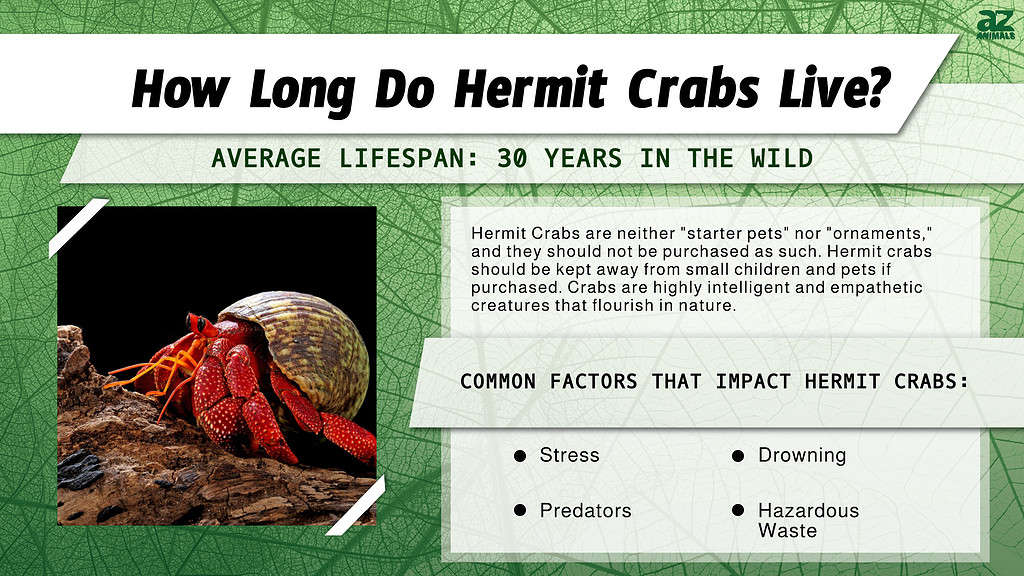
Contrary to widespread belief, hermit crabs live a long time. The natural life span of hermit crabs is longer than that of pet hermit crabs bought from pet stores. Many crustaceans can live for surprisingly long periods. For example, did you know that the oldest lobster lived to a reported 140 years old? We’ll dig into just how long hermit crabs live and strategies for caring for hermit crabs to extend their lifespans!
How Long Do Hermit Crabs Live?
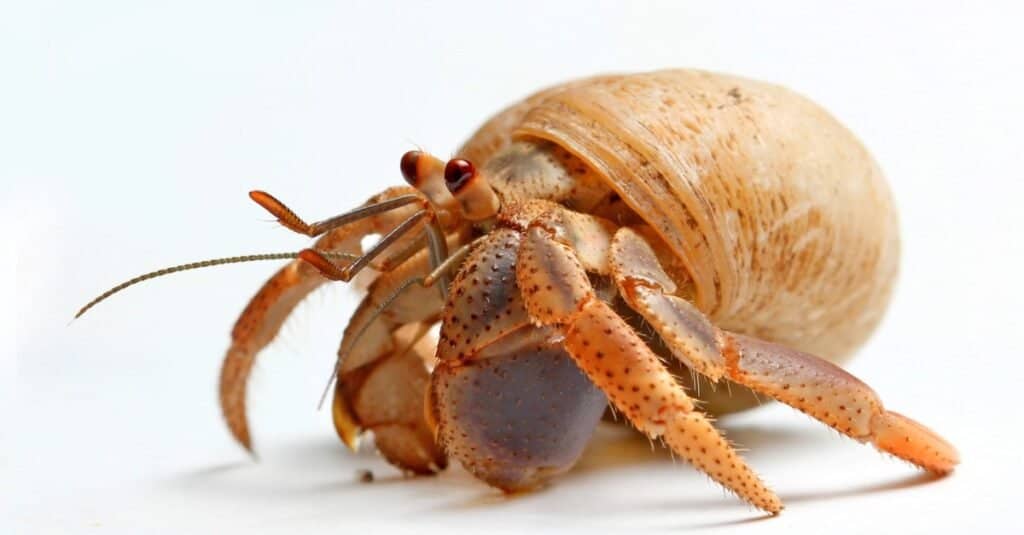
Hermit crabs can live 30 years or more in the wild, whereas they typically die within a year as pets.
©Alexander Sviridov/Shutterstock.com
The wild hermit crab has a life expectancy of 30 years if it is allowed to remain in its native habitat. In fact, the world’s oldest hermit crabs can live past 40 years old! One hermit crab at a Florida retirement community – named Jonathan Livingston – reached an incredible 44 years old before he passed away in 2021. As with other crustaceans like lobsters, the energy required to molt at advanced ages becomes too great and is a leading cause of death in older hermit crabs.
Yet, while we just cited some of the advanced ages hermit crabs can reach – especially in the wild – most hermit crabs in captivity live just a few months to a matter of years. When comparing the lifespans of wild and captive hermit crabs, there are a variety of factors at play. Keep reading to learn more.
Common Causes of Pet Hermit Crab Death
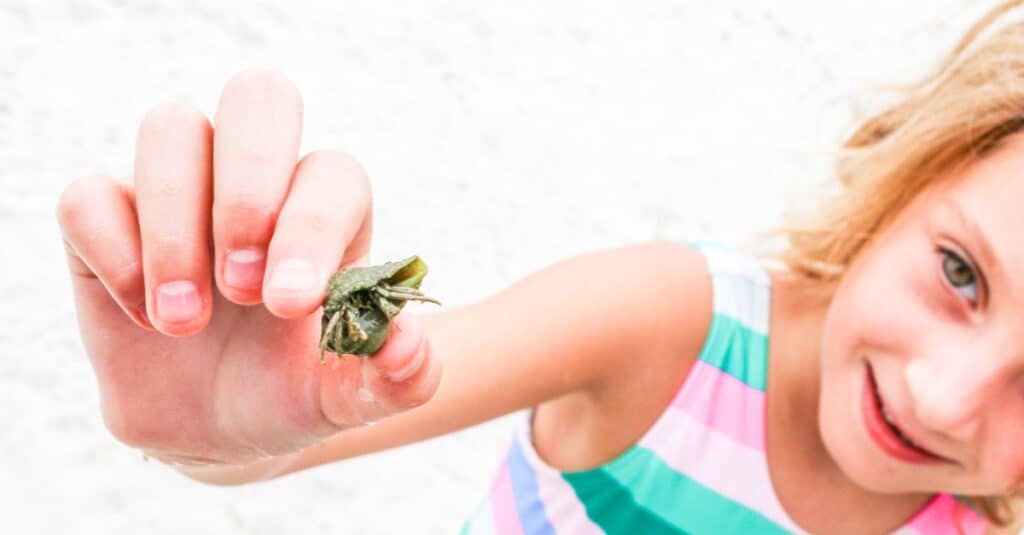
Improper handling of hermit crabs can cause injury or death.
©iStock.com/Lisa5201
Careless handling of captive hermit crabs results in high mortality. When the crab dies after a few weeks, we don’t notice. Sadly, this is an accepted practice. To properly appreciate the risks of owning these crabs as pets, it is important to understand the factors that affect a hermit crab’s lifetime as an owner.
The deaths of hermit crabs in captivity have several potential causes. The good news is that they can be avoided.
| Common Causes of Death for Hermit Crabs In Captivity |
| Stress |
| Hermit crabs might die from the trauma of being rehomed. |
| Drowning |
| Not being able to get out of a bathtub |
| Toxicity |
| Ingesting paint chipping, inhaling fumes, or drinking contaminated tap water |
| Suffocation |
| Insufficient humidity levels in the environment |
| Infection |
| Bacteria and fungi can thrive in unsanitary living circumstances. |
| Traumas / Falls |
| Ascends and descends while climbing or is dumped while being handled |
| Attacks by animals |
| Being attacked by a crab or similar animal while active |
| Mutilation |
| Hermit crabs in the process of molting are sometimes mutilated by their owners, who mistakenly believe they are dead. |
This is not a complete list. Captive hermit crabs can live just as long as their wild counterparts if they are cared for properly. The 44-year-old hermit crab lived nearly its entire life in captivity!
Common Causes Of Hermit Crab Death In The Wild
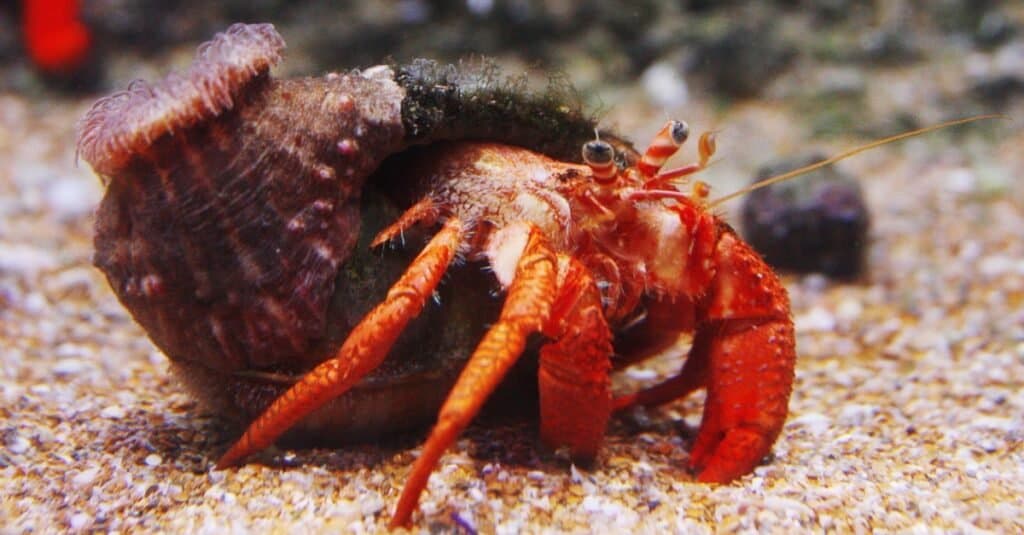
Hermit crabs can start to hibernate below 68 degrees. However, they aren’t evolved for true hibernation. If it stays below 62 for an extended period they might not recover.
©iStock.com/MATTHIASRABBIONE
Hermit crabs in the wild can survive for several decades. Hermit crabs can live for up to 40 years, according to research. However, there are certain factors that can affect their longevity in the wild.
Wild Hermit Crab Predators
Hermit crabs are low on the food chain. Fish and octopi prey on hermit crabs. Adult hermit crabs spend more time on land. This reduces the risk of exposure to marine predators. Larger crabs often eat hermit crabs. Birds may also swoop and pluck an exposed hermit crab
The best way a hermit crab can protect itself is to blend in with its surroundings. It will retreat into its protective shell, hoping that no predators will be able to get through. Hermit crabs may sacrifice their limbs to flee. These limbs can re-grow.
Wild Hermit Crab Environmental Factors
Hermit crabs are susceptible to environmental variables as well as natural predators. During times of high tide, drowning is a possibility. Hermit crabs will hide in their burrows to prevent this. The hermit crab, on the other hand, will run out of breath if it is caught in the act.
However, the issue of waste is far more serious. It’s common for hermit crabs to seek out new homes. Journal of Hazardous Materials reports that hermit crabs frequently find their way into plastic bottles. They die because of their inability to exit these vessels.
Is It Cruel To Keep Hermit Crabs As Pets?
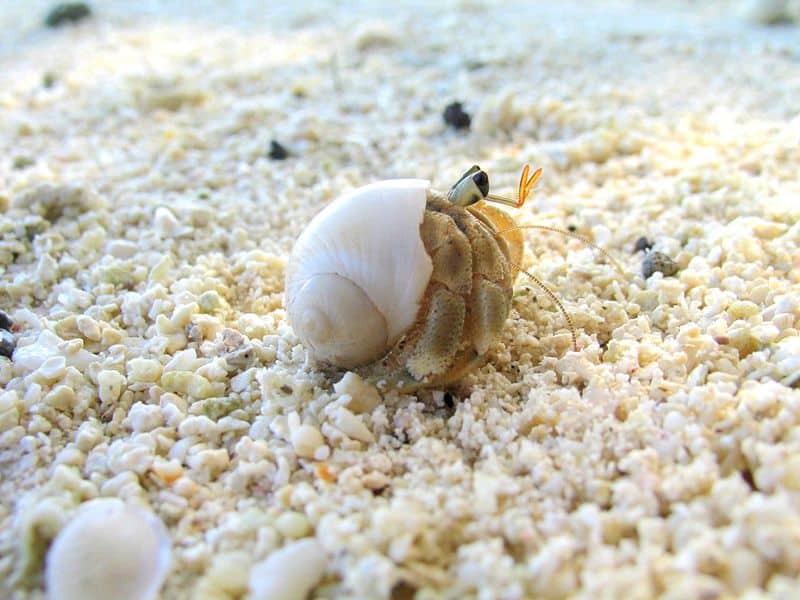
Hermit crabs are highly intelligent creatures that flourish best in nature.
©www.viajar24h.com (Jacopo Werther), CC BY 2.0, via Wikimedia Commons – License
Hermit Crabs are neither “starter pets” nor “ornaments,” and they should not be purchased as such. Hermit crabs should be kept away from small children and pets if purchased. Crabs are highly intelligent and empathetic creatures that flourish in nature.
It’s unlikely that anyone buying crabs will ever be able to offer them the life they deserve, no matter how much they want to. Unless properly cared for, pet hermit crabs have a short lifespan as they struggle to adapt and survive.
The photo featured at the top of this post is © www.viajar24h.com (Jacopo Werther), CC BY 2.0, via Wikimedia Commons – License / Original
Thank you for reading! Have some feedback for us? Contact the AZ Animals editorial team.






